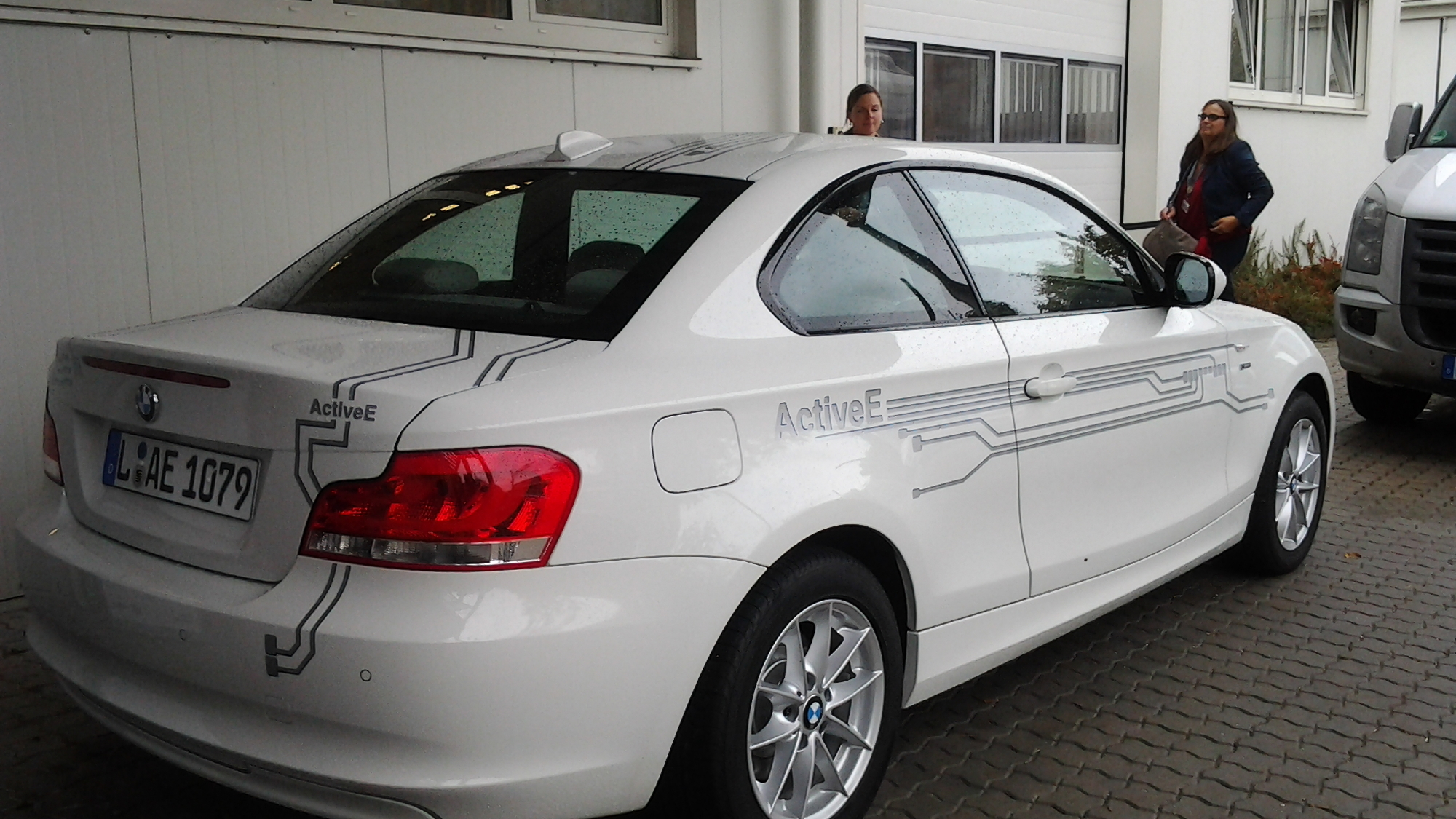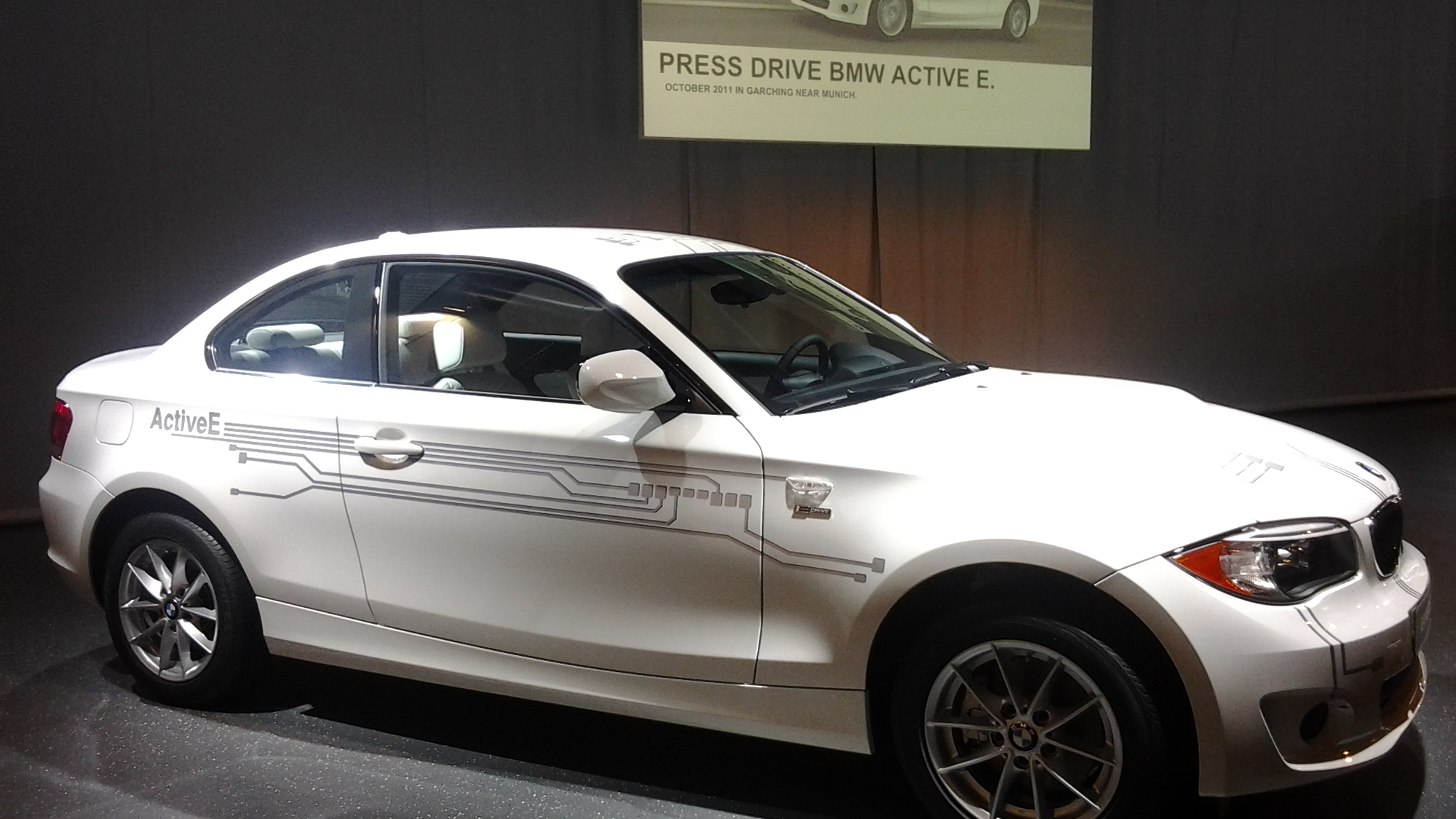A couple of weeks ago, BMW invited me to come to Munich and take part in the first drive of production versions of the BMW ActiveE, their second battery electric test vehicle.
A bit of background: I've been something of a high-profile MINI E pioneers, maintaining an active blog about my experiences, displaying the car at every green transportation expo I can make and frequently speaking to various press outlets about my time with MINI E #250.
The folks at BMW noticed the attention I've received, and they have frequently checked in on my blog to get feedback about my opinions on 28 months I've spent driving it around northern New Jersey--as much as 33,000 miles a year.
Many might think a car with a range of up to 100 miles wouldn't be sufficient for such high mileage. Well, as the 30-month program comes to an end in December, my odometer shows just shy of 70,000 miles, and any doubts that I may have had are long gone.
Once we arrived at the event in Munich, BMW executives introduced the ActiveE with a brief description of the company's three-step process to bringing e-mobility to the public.
First, the MINI E was created to gather data and analyze feedback from the program participants. That information helped shape the ActiveE, with the lessons learned from the ActiveE leading into the company's battery electric car for retail sale, the 2013 BMW i3.
BMW representative Tobias Hahn told the crowd two or three times: "While you are driving the ActiveE, I want you to imagine this exact same powertrain in a car that weighs 600 kilos (1,300 lbs) less."
Even though it was an ActiveE event, BMW's goal here is clearly to set the stage for the BMW i3, with the ActiveE as the final step before BMW enters into volume production of electric cars.
I was able to drive the ActiveE 25 miles on a preselected route, leading from our pickup point to BMW's research & development center. Most of the route was on city streets--not necessarily the best choice for thorough testing, but perhaps chosen because BMW envisions a majority of their electric-car customers doing this type of driving.
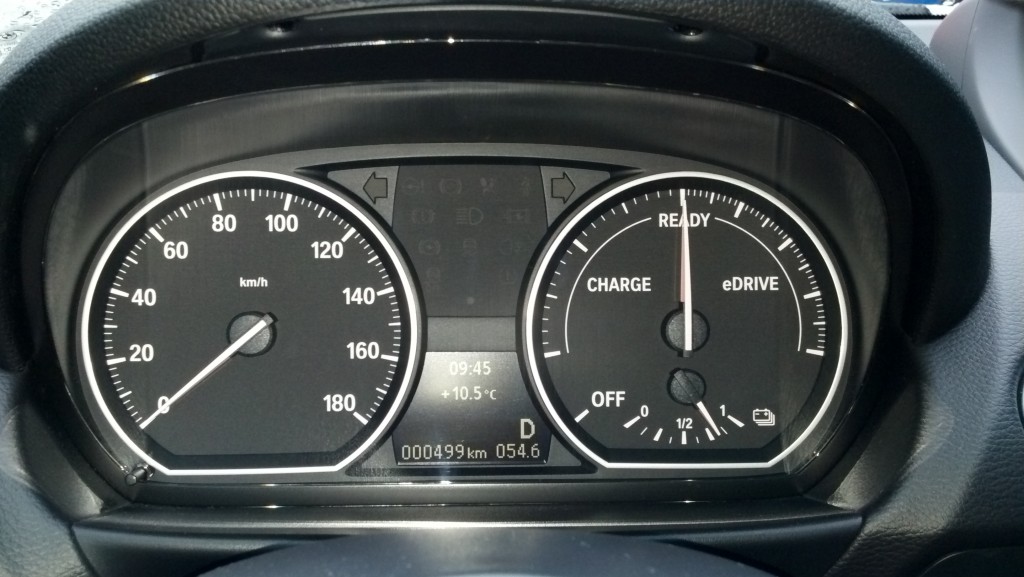
BMW ActiveE electric car, Munich, October 2011; photo by Tom Moloughney
The i3 has been called the "Megacity car," and BMW does not expect many of its buyers to come from rural areas where you often need to drive long distances on highways.
One section of our route was on the Autobahn, and I was able to get a good feel for the car's power. I'd say it was a tad slower than my MINI E but much smoother, both when accelerating and while regenerative braking took place.
The ActiveE's electric traction motor produces 170hp and 184 lb-ft of torque, so it's not underpowered by any means--but its 4,000-pound weight keeps it from being as nimble as the MINI E.
The regenerative braking strength is slightly lower than the MINI E's, which by far has the strongest regen I have experienced on any electric car. However, the ActiveE's was still very strong--much more so than a Nissan Leaf or Chevrolet Volt's.
After just a few minutes with it, I was able to return to the one-pedal driving style I have come to enjoy using in my MINI E.
BMW has clearly listened closely to comments from the MINI E lessees. Some of the things I suggested (including a highway coast mode) actually made it into the ActiveE. Here are some of the improvements:
Active thermal management: MINI E drivers in New York and New Jersey were very vocal about the effects of the cold weather on the car's range. Its passive thermal management system was no more than a small fan that blew cabin air across the pack, and there was no ability to precondition cabin temperature while still plugged in.
This meant the MINI E's range was reduced by as much as 40 percent during extreme cold periods--unacceptable for many drivers on the East Coast.
The ActiveE has an active thermal management system, and the batteries and cabin can be preconditioned while the car is plugged into the grid. Drivers can begin their journeys with a fully charged battery, a warm cabin, and a battery at the right temperature, regardless of the ambient temperature.
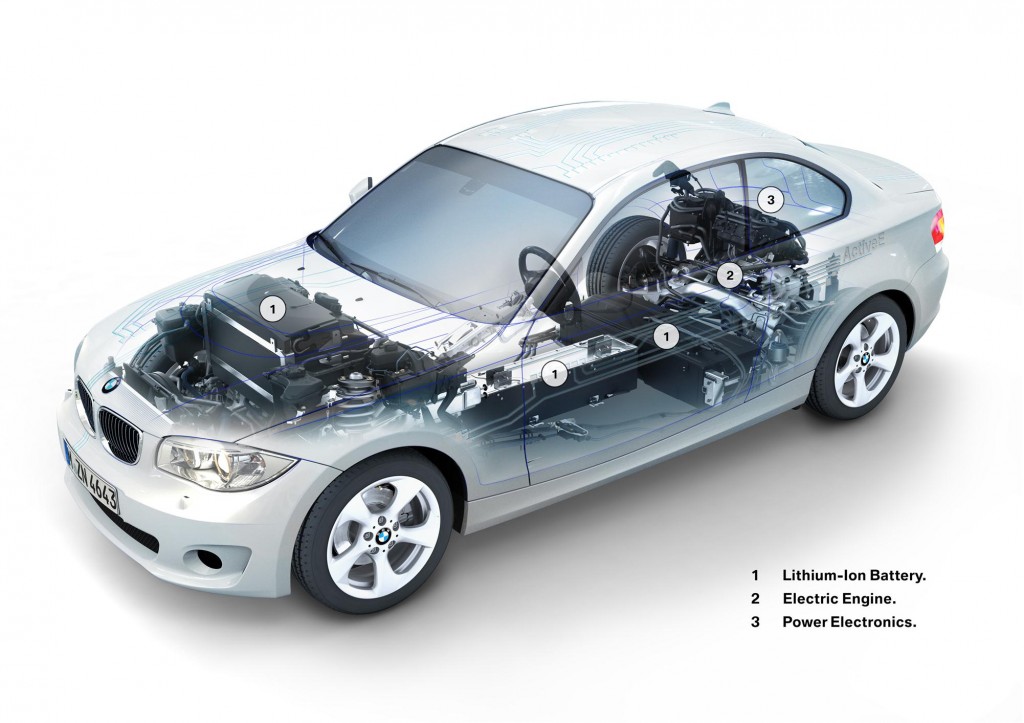
BMW ActiveE
This will undoubtedly extend the ActiveE's range during the winter months.
Eco-Pro mode: A quick press of a button behind the shifter activates what BMW calls the Eco-Pro mode. This reduces the power supplied to the motor and to the cabin heating and cooling systems. BMW estimated it will add 10 percent more range, while offering a slightly less spirited drive.
This feature can be useful on days where drivers know they may be pushing the car's limit. MINI E drivers like me developed our own, self-imposed Eco-Pro mode when necessary. We called it driving slowly. Still, I can see this mode being a useful tool--especially when combined with slowing down.
Gliding: The ActiveE features an "intermediate position" of the accelerator pedal, allowing it to "glide". In this mode, the regenerative brakes do not activate when the driver backs off the accelerator a bit. Instead, the car coasts forward without using any power. If you back off the accelerator a bit more, the regen grabs and slows the car down quickly.
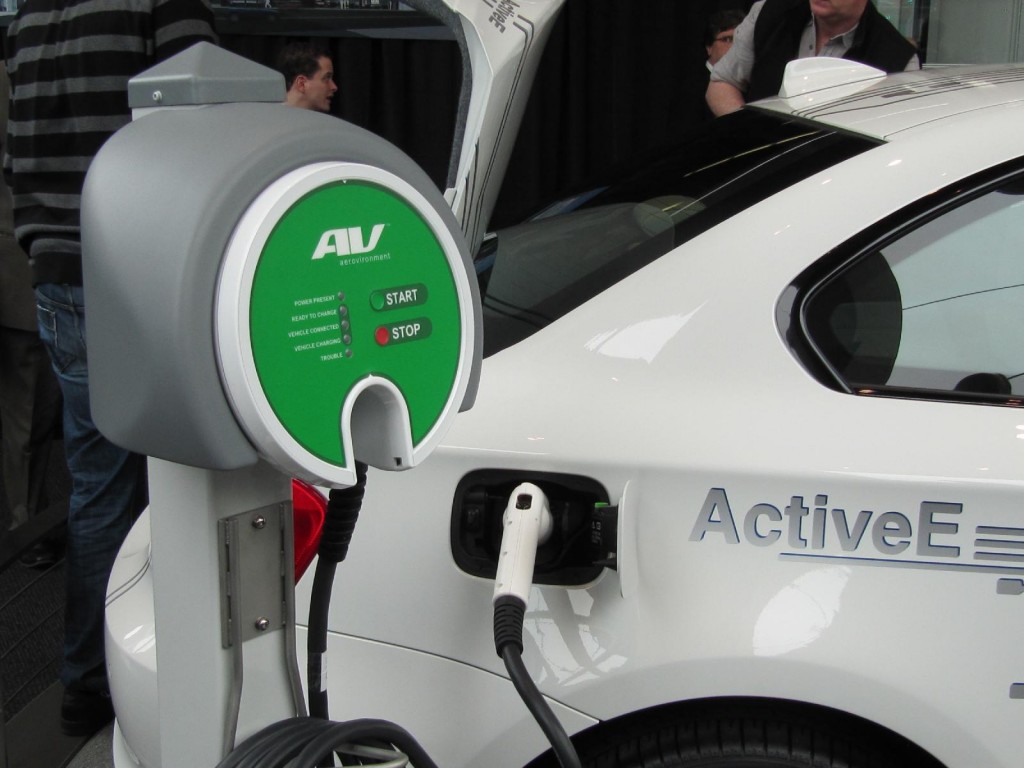
BMW ActiveE electric car, at BMW Manhattan media event, April 2011
This feature was meant to increase the car's range by allowing the driver to coast, which is very efficient. Driving the MINI E, there was a very fine line between accelerating and activating the regen, and this feature is designed to expand that margin of pedal play so it is easier to coast--or "glide" as BMW calls it.
I was able to activate the glide mode a few times during my test drive, and it definitely worked. But I also found I could accidentally back off the accelerator too much and the regenerative brakes would grab, without that being my intention. I like this feature and plan to use it a lot, but it may take drivers a little time to get used to it.
Home charging stations:
As for charging, BMW has partnered with AeroVironment to provide the charging stations to be located inside ActiveE drivers' garages. The car will accept 32 amps and charge at 7.7 kilowatts. This will fully charge the car in less than 5 hours. As with any electric car, charging rate isn't linear, and it will slow down for the final 10 percent or so of charging.
BMW claims the ActiveE will give 25 miles of range per hour of charging until it reaches the final 10 percent or so. This robust 7.7-kW charging rate will be very useful if you have a depleted battery and need to add a few miles of range quickly for a short journey.
The ActiveE will not be able to charge at DC quick-charge stations, however. When I asked if the i3 would have that ability, I was told that no decision had been made yet. But with the recently announced agreement among automakers (including BMW) to support a single fast-charging system, I would consider that a fait accompli.
BMW ActiveE Concept trunk space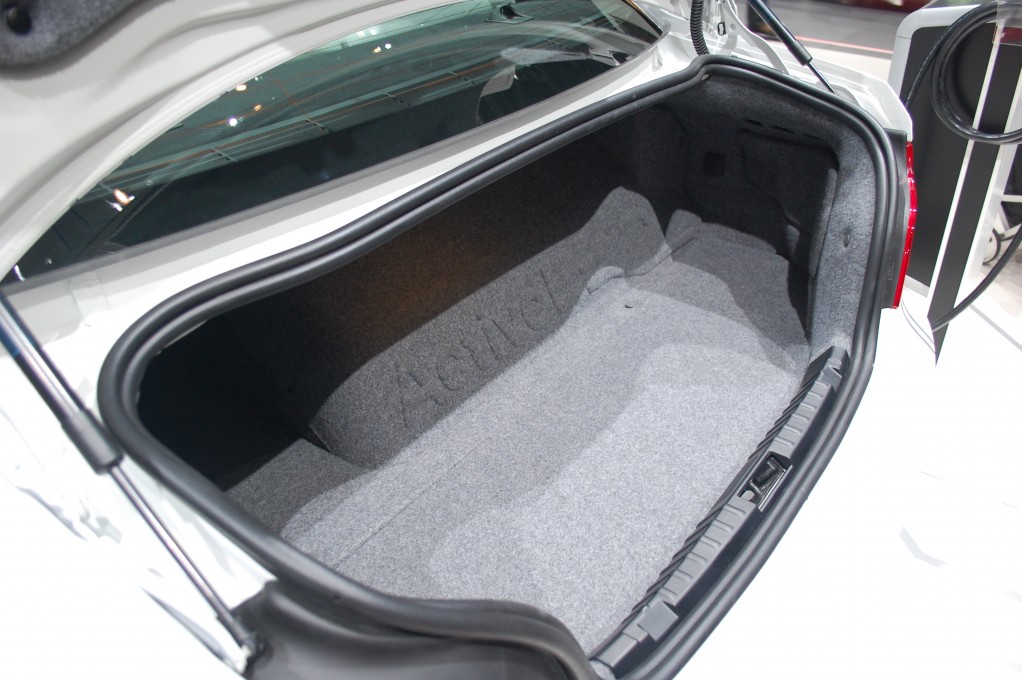
The BMW ActiveE program will begin during the next few months in the U.S., and then in various European cities. BMW will build about 1,100 ActiveEs, with 700 to be leased here. The cars will be offered on a 24-month, closed-end lease for $2,250 down and $499 per month.
Existing MINI E lessees who lease an ActiveE will have an AeroVironment charging station installed at their homes at no charge. Others who are new to the BMW electric-car program will have to pay for it, though the price has not yet been announced.
The BMW ActiveE will only be available in New York, New Jersey, greater Los Angeles, San Diego, San Francisco, Sacramento, and Boston.
Tom Moloughney is a New Jersey electric-car advocate, MINI E driver, and restaurant owner. His last article for GreenCarReports looked at whether public charging stations are really needed for electric-car deployment. BMW provided airfare, lodging, and meals so Moloughney could test-drive the BMW ActiveE.
+++++++++++

